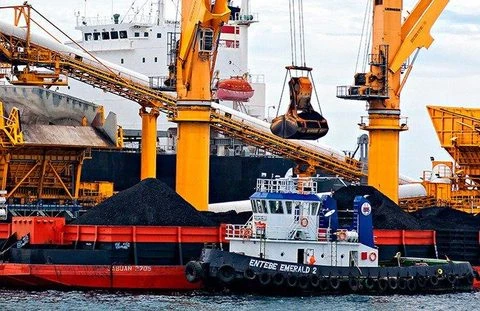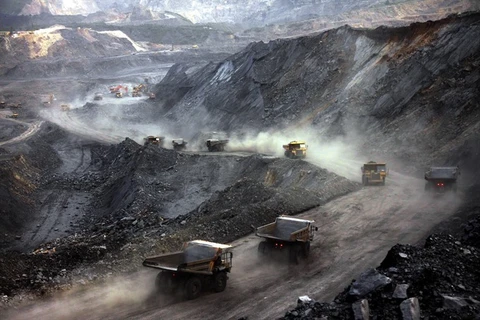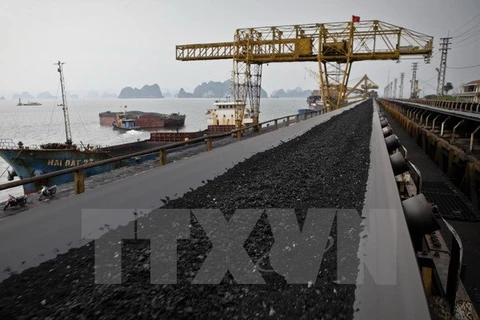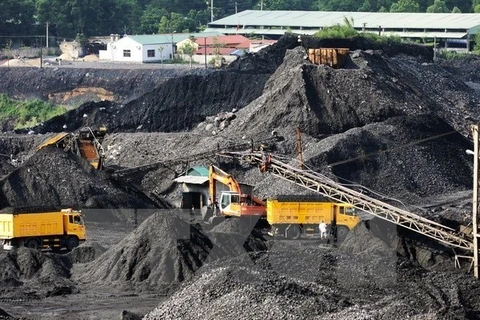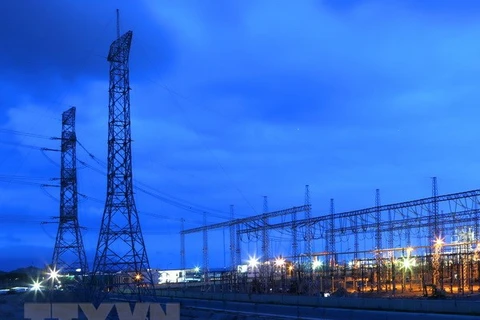 Experts debate the feasibility and economic and social impacts of the exploitation of the Red River Delta coal basin during a consultative workshop on December 4. (Photo: baotainguyenmoitruong.vn)
Experts debate the feasibility and economic and social impacts of the exploitation of the Red River Delta coal basin during a consultative workshop on December 4. (Photo: baotainguyenmoitruong.vn) Hanoi (VNA) – Geological and mining experts recently debated the feasibility and economic and social impacts of the exploitation of the Red River Delta coal basin, which has estimated reserves a hundred billion tonnes of coal.
The Red River Delta coal basin has received great attention from the public and governmental agencies over recent years because of its huge reserves, President of the Vietnam Union of Science and Technology Associations (VUSTA) Prof. PhD. Dang Vu Minh told the workshop held by the VUSTA and the Vietnam Union of Geological Sciences (VUGS) in Hanoi on December 4.
Prof. PhD. Tran Van Tri from the VUGS said the coalfield under the Red River Delta, particularly in the provinces of Thai Binh, Hung Yen and Nam Dinh, has enormous potential, with reserves of quality bituminous coal estimated at dozens of billions of tonnes. However, the delta is extremely complex in terms of geology and hydrology while data and documents available on its coalfield are very limited, so it would be a great challenge for the country to determine if it is feasible to mine the coal.
He stressed the need for studies to assess the socio-economic impacts of mining of the coalfield before drafting plans to survey and test it.
Prof. PhD. Trinh Duy Luan from the Vietnam Sociology Association outlined several positive impacts of the Red River Delta coal-mining project. The mining would create jobs for rural residents forced to leave their farming land for the project, improve income for them and facilitate the development of new urban areas and industrial parks, he said.
But Luan warned the negative effects would probably outweigh positive ones, with big challenges coming from difficulties in acquisition of residential and agricultural lands on such a large scale and provision of new homes and jobs for affected people, not to mention negative influences in terms of culture.
Participating experts also discussed some solutions to minimise potential damage to the environment or geological changes that may occur during coalfield exploitation.
They further noted that it is important to use safe coal extracting technologies and assess the impacts on the environment at each mining site if the project is carried out. The country must expand the production of renewable energy, like solar power, wind power and tidal power, to reduce the volume of coals used for thermal electricity plants, thereby easing the urgent need to exploit the Red River Delta coalfield.
In 2006, the Vietnam National Coal and Mineral Industries Group (Vinacomin) announced it had discovered a significant coal seam in the Red River Delta in northern Vietnam estimated to contain up to one hundred billion tonnes.
The bed covers 25 sq.m situated about one km below the surface, stretching from Khoai Chau district of Hung Yen province to Thai Binh province’s Dong Hung district. About 28 billion tonnes of sub-bituminous coal, a medium grade of coal rated between lignite and bitumen, could be viably exploited from the bed and used in the nation’s thermoelectric power plants.
The domestic coal demand in Vietnam has risen dramatically over the past eight years, from 20 million tonnes in 2009 to 40 million tonnes in 2017, with most of it used for electricity production.
To meet the need for more coal, Vinacomin has turned to imports. The amount of coal imported climbed rapidly to more than 14.67 million tonnes last year from 3 million tonnes in 2014.
It is estimated the amount of coal needed for production of electricity will reach 60 million tonnes by 2020 and 86 million tonnes by 2025. So far this year, the amount of coal provided to thermal plants was 26.9 million tonnes. That figure is set to rise to 31.9 million in 2019. –VNA
VNA
